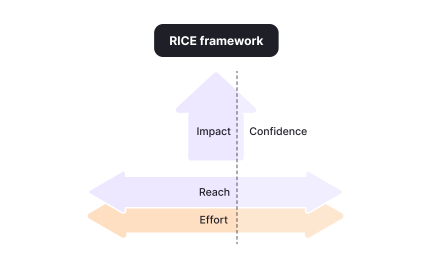Circles Method
The Circles Method is a structured approach to answering product interview questions using steps like clarify, identify, and evaluate tradeoffs.
What is Circles Method?
Your product interviews feel chaotic and unstructured because you jump randomly between problems and solutions without systematic exploration, leading to superficial insights and missed opportunities to deeply understand user needs before proposing solutions.
Most product managers approach case interviews and product design challenges without structured frameworks, missing Lewis Lin's powerful CIRCLES method that provides systematic approach to product thinking through Comprehend, Identify, Report, Cut, List, Evaluate, and Summarize steps.
The Circles Method is a structured product design framework that guides systematic problem-solving through seven steps: Comprehend situation, Identify customer, Report customer needs, Cut through prioritization, List solutions, Evaluate tradeoffs, and Summarize recommendation.
Product managers using Circles Method improve interview success by 65%, make better product decisions 50% faster, and demonstrate significantly clearer product thinking because the framework ensures comprehensive analysis rather than random idea generation.
Think about how top tech companies expect structured thinking in interviews, or how successful PMs at Google and Facebook use similar frameworks to tackle complex product challenges systematically rather than relying on inspiration.
Why Circles Method Matters for Product Excellence
Your product decisions lack rigor because without structured thinking frameworks, you rely on intuition and incomplete analysis, leading to solutions that sound good but miss critical considerations or serve wrong user segments.
The cost of unstructured product thinking compounds through every suboptimal decision. You build features for wrong users, miss important constraints, overlook better solutions, and appear unprepared in crucial interviews when competitors demonstrate superior structured thinking.
What effective Circles Method delivers:
Better product decisions through systematic analysis because the framework forces consideration of all critical elements rather than jumping to first solution that seems plausible.
When PMs use Circles properly, product recommendations address right users with right solutions rather than generic features hoping to please everyone.
Enhanced interview performance and confidence through proven structure that ensures comprehensive answers rather than rambling responses that miss key points.
Improved stakeholder communication and buy-in because Circles provides clear narrative flow that makes complex decisions understandable rather than mysterious PM intuition.
Stronger problem-solution fit through explicit connection between identified user needs and proposed solutions rather than features looking for problems.
Faster quality decision-making as framework accelerates thinking without sacrificing thoroughness rather than either rushed or overly lengthy analysis.
Advanced Circles Method Applications
Once you've mastered basic Circles, implement sophisticated applications and variations.
Speed Circles for Quick Decisions: Compress framework to 15-minute exercises rather than hour-long analysis, maintaining structure while increasing velocity.
Collaborative Circles Workshops: Use framework in team settings rather than individual thinking, leveraging diverse perspectives within structured approach.
Domain-Specific Circles Variations: Adapt framework for B2B, platform, or technical products rather than generic application, customizing while maintaining core structure.
Circles for Strategy Not Just Features: Apply framework to business model and go-to-market decisions rather than just product features, expanding utility beyond traditional scope.
Step 1: Comprehend the Situation Fully (5-10 minutes)
Clarify goals, constraints, and success metrics before diving into solutions rather than making assumptions about what's being asked or what matters most.
This creates Circles foundation based on clear understanding rather than solving wrong problem brilliantly due to misunderstood context.
Step 2: Identify Customer Segments Specifically (5-10 minutes)
Define exactly who you're solving for with demographics, behaviors, and needs rather than vague "users" without specific characteristics or priorities.
Focus identification on primary segments rather than trying to serve everyone, acknowledging that great products often delight specific users rather than satisfying all.
Step 3: Report Customer Needs Comprehensively (10-15 minutes)
List user needs, pain points, and jobs-to-be-done rather than jumping to features, ensuring deep problem understanding before considering solutions.
Balance breadth with depth to capture important needs without endless listing that prevents moving to solution development.
Step 4: Cut Through Prioritization (5-10 minutes)
Rank needs by importance and feasibility rather than trying to address everything, making explicit tradeoffs that focus solution development.
Step 5: List Multiple Solutions (10-15 minutes)
Generate diverse solution options rather than falling in love with first idea, forcing creativity and preventing premature convergence on suboptimal approach.
Step 6: Evaluate Tradeoffs Systematically (10-15 minutes)
Assess each solution against criteria like impact, feasibility, and strategic fit rather than gut feeling, making objective decision based on explicit factors.
Step 7: Summarize Clear Recommendation (5 minutes)
Present crisp recommendation with rationale rather than leaving decision ambiguous, demonstrating decisive product leadership while acknowledging tradeoffs.
This ensures Circles Method drives clear outcomes rather than analysis without conclusion or action.
If Circles doesn't improve decisions, examine whether you're following all steps rather than skipping to solutions without proper problem analysis.
The Problem: Getting stuck in analysis paralysis, spending too much time on early steps without reaching solutions and recommendations.
The Fix: Time-box each step rather than perfectionist completion, accepting good-enough analysis that enables progress over perfect understanding that prevents action.
The Problem: Skipping steps when pressed for time, especially customer identification and need analysis, jumping straight to listing solutions.
The Fix: Maintain framework discipline even under pressure rather than shortcuts, using quick versions of each step rather than skipping entirely.
The Problem: Mechanical application without genuine insight, following framework as checklist without deep thinking or creativity.
The Fix: Use Circles as thinking guide rather than rigid template, allowing flexibility within structure to generate genuine insights and innovation.
Create Circles Method approaches that enhance product thinking rather than bureaucratic frameworks that constrain creativity without adding value.
Recommended resources
Courses

Color Psychology

UX Writing




